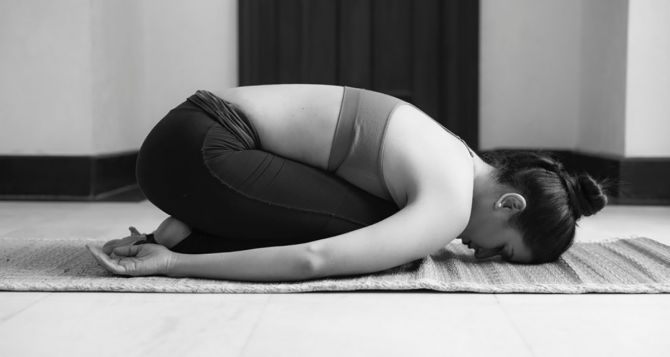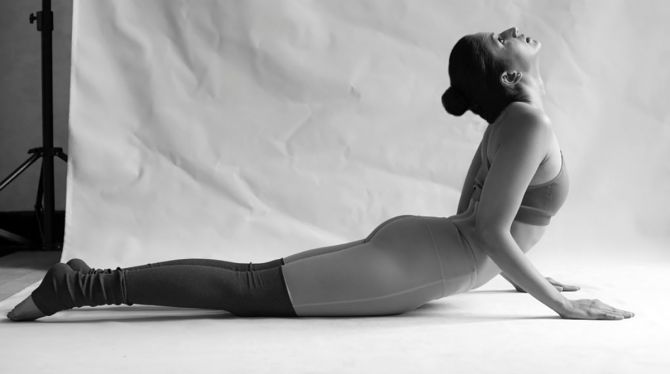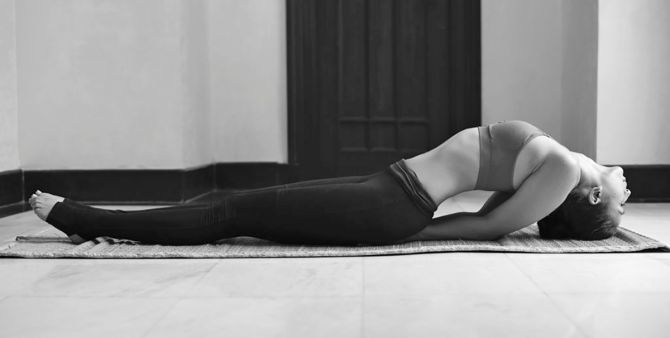Yogini and wellness entrepreneur Ira Trivedi suggests asanas that work on balancing the hormonal systems leading to better and regular menstrual cycles.
During menstruation, it is important for women to relax the body and mind.
Stress can cause discomfort that may lead to pain if not dealt with properly.
Several causes exist, but most women experience symptoms like nausea, headaches, discomfort in the abdominal area, heavy flow and even blood clots.
A yoga sequence can help you deal with your period. It doesn’t have to keep you from living your life — instead, think of it as a way to cope.
The position of the body and alignment during each posture helps in releasing tension, easing tightness and bloating of the stomach during your periods.
Yoga speeds up the metabolism and helps the body as a whole relax faster. Just five minutes will make you feel better!
With the right approach and precautions, it can promote mental clarity, as well.
Below are five essential asanas that work on balancing the hormonal systems leading to better and regular menstrual cycles:
1. Baddha Konasana (Bound Angle Pose)
This asana is ideal not only for those who have menstrual cramps, but it’s also good for digestion and constipation.
The posture helps relieve fatigue and dizziness.
Practicising a few minutes of this asana is believed to provide relief from backache, strengthen the pelvic organs and stretch the hips, knees and ankles.
The muscles of the lower body are stretched in remaining in this pose for a few minutes.
This improves circulation of blood in the abdominal region and relieves pain during periods.
2. Balasana (Child’s Pose)
This asana is a gentle forward bend with a focus on releasing tension and relieving stress.
The posture is traditionally used at the end of asana practice to aid recovery from more vigorous poses.
Child’s Pose also helps ground and release tension, allowing you to feel more present during meditation.
It is a safe alternative to resting on your belly during menstruation due to the inversions and backbends in yoga postures, which can aggravate bloating and abdominal discomfort caused by menstrual blood flow.
Balasana is also restorative and gives an overall sense of calm after you finish your menstruation cycle.
3. Bhujangasana (Cobra Pose)
Cobra Pose is an effective yoga asana that stimulates the functioning of the lymphatic drainage system and provides relief from menstrual cramps.
It strengthens the abdominal and uterine muscles, applies pressure to the ovaries and is ideal for relieving menstrual discharge pain and inflammatory backaches.
It also stretches the chest, neck and shoulders, releases spine tension and relaxes the mind.
4. Upavistha Konasana (Wide Angle Seated Forward Bend)
It can even help to relieve mild backache and period related abdominal pain.
The success of this yoga pose depends on your ability to relax and keep your body really straight, and the bend in your knees should not exceed the bend in your elbows.
It can be practiced in all stages of menstruation, which is helpful for menorrhagia (heavy periods).
This posture facilitates the uterine contractions and helps in treating dysmenorrhea (painful menstruation).
Note: The only difference when you practice this pose during menstruation is to not fold forward completely and don’t hold the pose for more than 30 seconds at a time.
5. Matsyasana (Fish Pose)
Fish pose is a wonderful asana to reduce menstrual pain by providing support to the lower back through mild backward bending.
As our posture tends to worsen around menstruation, these gentle backbends help decompress the spine and reduce any shoulder and neck tension that may be building up around menstruation.
It is also therapeutic for the bladder and urethra.
A few things to keep in mind:
- Do a few basic yoga practices every day, even if you have just 10 minutes.
- Learn about your body cycle and how it works. Understand that this is not a competition with yourself, and don’t compare yourself to others.
- Understand the physical ways in which yoga can help you physically, with hurting joints, painful cramps, bloating, etc.
- Be aware of potential pitfalls.
- Be mindful of breathing.
- Avoid head standing asanas and strenuous workouts.
The more you are aware of your body, the easier it will be for you to feel whether or not you are experiencing discomfort that is related to your period.
Know what your body needs and be open to what might make you feel better.
Source: Read Full Article






